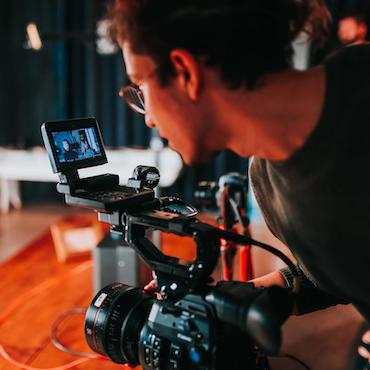While we are beginning to see advancements in getting back to meeting in person, a full live event may not make the most sense-at least not yet. And these types of events may be a smart option for long-term strategy as well. Hybrid meetings integrate the in-person experience and the virtual one, using technology, production and engagement tools to deliver a brand’s message. But how do you know when and how to incorporate hybrid events? Here, we look at what you need to know about these types of meetings.
What you need to know about hybrid events
Hybrid solutions create unique experiences for attendees, regardless of their location, and provide multi-faceted options for interacting with content. These types of events come with their own unique benefits–and new challenges–but as we get back to safe travel both domestically and internationally, they are a great option.
When deciding how and when to get back to meeting in person, remember:
- Hybrid events are seldom going to be less expensive. Because you are building two attendee journeys, you will need technology, planning time, production time and other resources to do this well for both audiences. Consider what mix of hybrid and face-to-face works for you to achieve your event goals within budget.
- With hybrid events, time zones for face-to-face and virtual attendees may not match up. Build agendas that put the core content blocks in the most universally user-friendly spot possible.
- Anticipate an increase in the number of “onsite” staff required during your event. You will need both face-to-face and virtual teams tailored to those specific agendas, both from vendors and from your internal team.
- Acknowledge how the past year has changed your attendees’ perception of necessary travel. Now that we are used to virtual events, our threshold of what needs to be in person may have changed, and your event will be viewed through this new lens. Going forward, some events will be better in a hybrid format, some may need face-to-face to be most successful, and others may be good options to remain totally virtual-both now and in the future. By aligning your event strategy to this new way of thinking, you will drive engagement across your entire event portfolio.
Produced meetings
There’s an energy and excitement that comes from gathering together, and it’s possible to harness this for your attendees without actually bringing them into the same room. Studio sets built to purpose and designed to reflect your brand can bring key presenters to the same space and deliver interaction to virtual audiences.
Advantages
-
- One production set, built for safe social distancing
- Endless branding and message opportunities
- Onsite energy and interaction
- Easy collaboration and encourages spontaneous interaction
Challenges
-
- Changes in global and/or local recommendations can require a quick pivot
Adding a live audience
While we want to meet in person, large gatherings of the may not be possible due to business or cost restrictions. Hybrid events allow you to gather in smaller groups in different locations and offer live streaming between gatherings and to remote attendees.
- Add a studio audience to your main stage
- Group attendees in regional “pods”, using offices and event spaces that allow for social distancing
- Add stages to the regional events, sharing collaborative content
Advantages
-
- A true face-to-face experience for your attendees
- Social distancing is easier to manage
- Less likely to be impacted by changes in local recommendations
- There are many ways to create dynamic content leveraging the diverse locations of your attendees
- Attendees may not require airfare and other travel expenses to attend a regional event
Challenges
-
- You’ll need more space that usual to keep the space socially distant
- You’ll be planning multiple events that should have a similar attendee experience, increasing planning time and making the events more complex
- Engaging live and virtual audiences equally requires planning and investment
Find out how BCD M&E can help you with planning your virtual or hybrid event.



